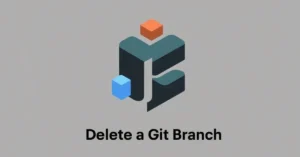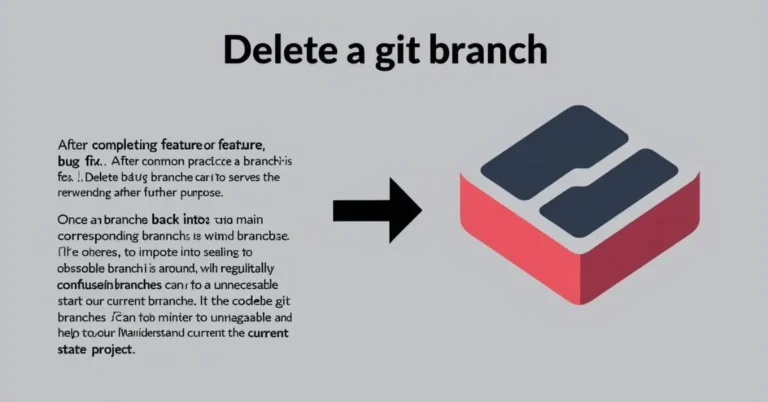Git is a powerful version control system widely used in software development for tracking changes in source code during software development. One of its most compelling features is the ability to create and manage branches. Branching allows developers to diverge from the main codebase to work on new features, bug fixes, or experimental projects without affecting the main project. Effective branch management is crucial in maintaining a clean and organized codebase.
Why Delete a Git Branch?
After completing a feature or bug fix, it’s common practice to delete the corresponding branch. This is because once a branch is merged back into the main codebase, it usually serves no further purpose. Keeping obsolete branches around can lead to confusion, clutter, and potential errors. Regularly deleting unnecessary branches helps maintain a clean and navigable repository, making it easier for team members to understand the current state of the project.
Types of Git Branches
In Git, there are local and remote branches. Local branches exist on your machine, while remote branches are stored in a remote repository like GitHub or GitLab. Typically, branches are created for different purposes, such as feature development, bug fixes, or release preparation. It’s essential to know the type of branch you’re dealing with before deleting it, as the method of deletion varies.
Pre-deletion Checklist
Before deleting a branch, it’s crucial to ensure that the branch’s work has been merged into the appropriate parent branch (usually the main branch). Additionally, any uncommitted changes should be stashed or committed to avoid losing work. If the branch is linked to an open pull request, make sure the pull request is closed or merged. This checklist helps prevent accidental data loss.
Deleting a Local Git Branch

To delete a local branch, you can use the following command:
git branch -d <branch_name>
This command only works if the branch has been fully merged with its parent. If you need to delete a branch that hasn’t been merged, you can force deletion with:
git branch -D <branch_name>
Always ensure you’re not on the branch you’re trying to delete. You can check your current branch with:
git branch
Deleting a Remote Git Branch
Deleting a remote branch is a slightly different process. The command to delete a remote branch is:
git push origin --delete <branch_name>
This command tells Git to remove the branch from the remote repository. It’s important to verify that the branch is no longer needed before deleting it, especially in a collaborative environment where others might be using it.
Best Practices for Branch Deletion
Regular deletion of feature branches after merging is a good habit. It helps keep the repository clean and reduces the risk of confusion or errors. Automating branch management can also help ensure that branches are deleted timely. Tools like GitHub’s “Branch Protection” rules can also help prevent premature deletion of important branches.
Potential Risks and How to Mitigate Them
Deleting a branch can sometimes lead to the loss of important changes, especially if the branch hasn’t been merged. To mitigate this, always double-check that the branch is no longer needed and consider creating a backup branch before deletion. If a branch is accidentally deleted, Git provides ways to recover it, but prevention is always better.
Tools and Techniques for Effective Branch Management
There are many tools available that can help manage branches more effectively. Git clients like SourceTree, GitKraken, or even IDEs like Visual Studio Code provide intuitive interfaces for branch management, making it easier to delete branches without using the command line. Automation tools can also help keep your repository clean by automatically deleting stale branches after a certain period.
Conclusion
Managing branches effectively is key to maintaining a clean and organized codebase. By following best practices and being cautious when deleting branches, you can avoid potential issues and keep your development workflow smooth. Whether you’re working alone or in a team, regular branch maintenance is a habit that pays off in the long run.

